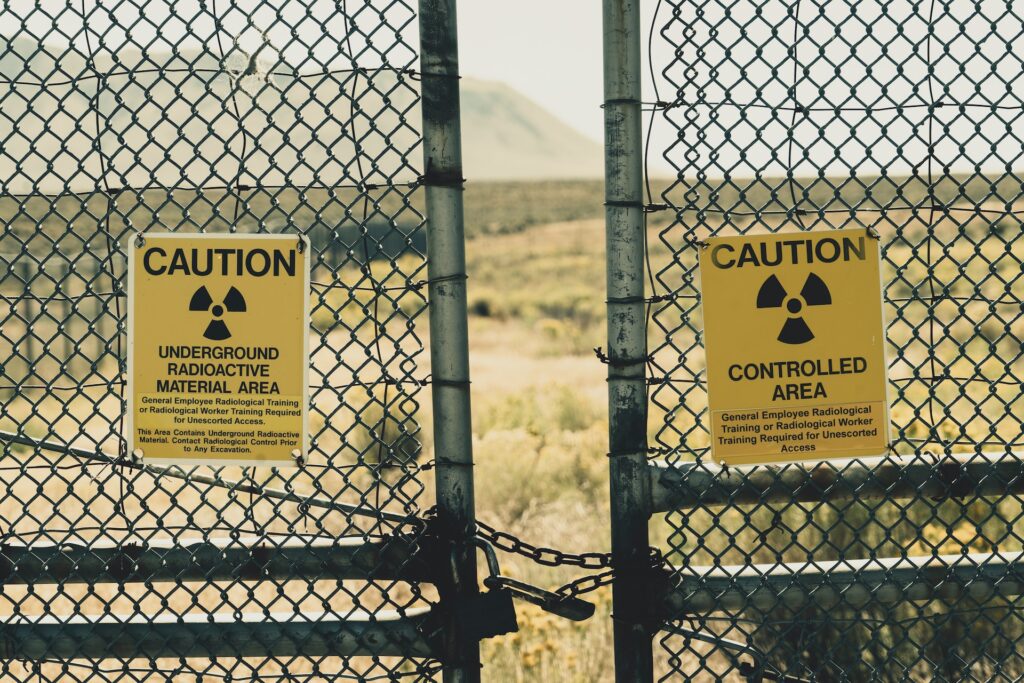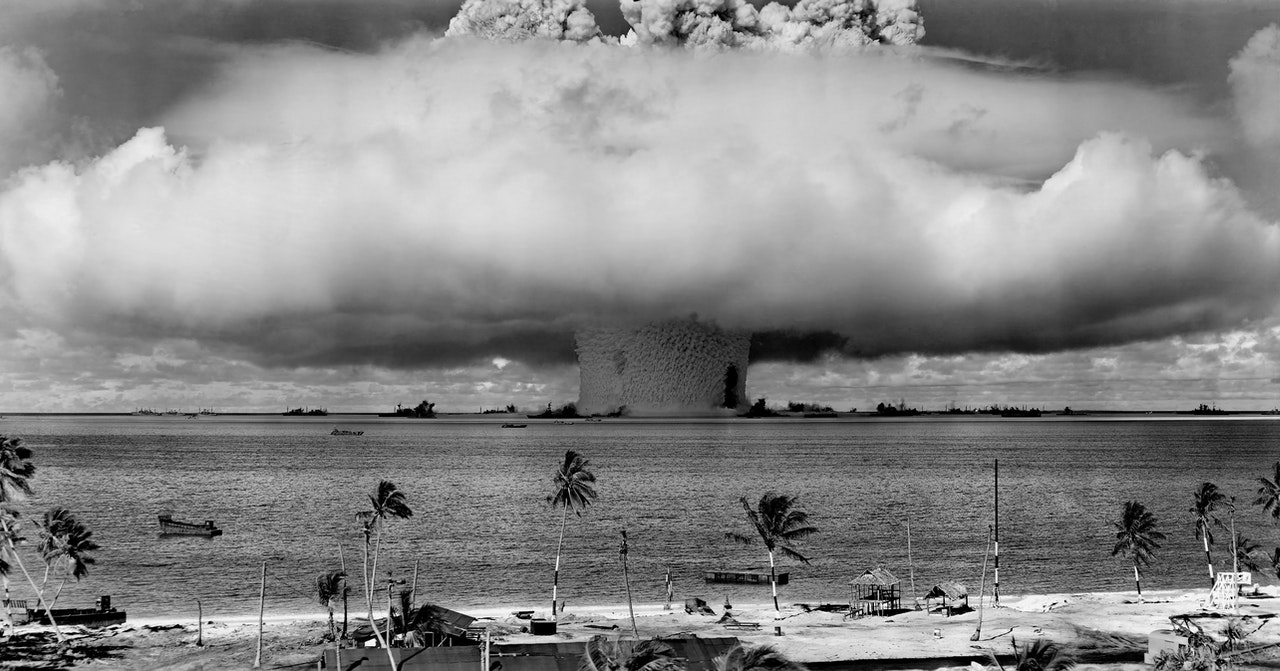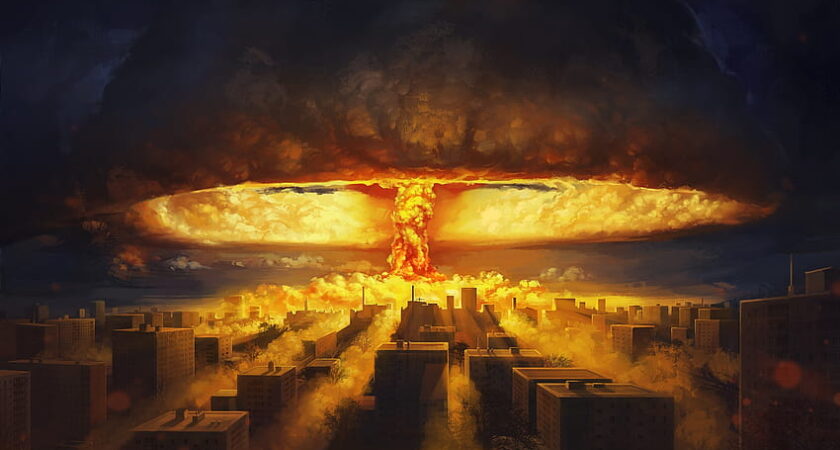Now I am become Death…
In August 1945, the United States detonated 2 Atomic bombs over Japan. The first destroyed the city of Hiroshima on Monday the 6th. The second, more powerful bomb, destroyed the city of Nagasaki, just 3 days later. Over 35% of the 2 cities populations were killed by the initial blast, with many more dying in the weeks, months and years afterwards, due to Radiation exposure.
The Japanese Empire surrendered several weeks later, bringing about the end of the Second World War. To this day, there are people who see the 2 bombings as a War Crime, whilst others believe it was a necessary evil which quickly ended the bloodiest War in history.
It certainly did end the War, however before the bombs were dropped, the Allies had already destroyed 64 Japanese cities via a conventional firebombing campaign.
It is also possible that the 2 Atomic bombs were not only the last shots of World War 2, but the first shots fired in the Cold War. If it was designed to get the attention of the Soviet Union, then it certainly succeeded. The USA’s monopoly on Nuclear weapons came to an end just 4 years later when the USSR successfully detonated its first Nuclear bomb in 1949.
The United States responded by developing the Hydrogen bomb just 2 years later, and so began the Nuclear arms race.
What is a Nuclear weapon?
According to the campaign for Nuclear Disarmament website: Nuclear bombs are weapons of mass destruction. They harness the forces that hold the nucleus of an atom together by using the energy released when the particles of the nucleus (neutrons and protons) are either split or merged.
There are two ways that nuclear energy can be released from an atom:
- Nuclear fission – the nucleus of an atom is split into two smaller fragments by a neutron. This method usually involves isotopes of uranium (uranium-235, uranium-233) or plutonium (plutonium-239).
- Nuclear fusion – two smaller atoms are brought together, usually hydrogen or hydrogen isotopes (deuterium, tritium), to form a larger one (helium isotopes); this is how the sun produces energy.
The reason Nuclear bombs are so dangerous to humanity is that even those who survive the blast are still in danger from the aftereffects, which Carl Sagan referred to as the Nuclear Winter. This would be a period of abnormal cold and darkness predicted to follow a nuclear war, caused by a layer of smoke and dust in the atmosphere blocking the sun’s rays. This would make growing food crops impossible and lead to widespread famine.

8 decades of Nuclear Proliferation
According to the Arms Control Association there are around 15,000 nuclear warheads on our planet today. Whilst 90% of them belong to Russia and the USA, many other nations have now joined the party. Great Britain comes in third place, developing their first Nuke in 1952: “The Hurricane”.
They were followed by France in 1960, and China in 1964. Subcontinent rivals India and Pakistan also began an aggressive nuclear build up in the mid 1990’s. We know that these countries have several hundred warheads each, but other nations are more difficult for the International community to police.
After seeing what happened to Saddam Hussein and Muammar Ghaddafi, Kim Jong Il began a Nuclear weapons program in North Korea, which has been continued by his son and successor, Kim Jong Un. The Middle Eastern democracy of Israel is believed to possess about 90 Nuclear Warheads, but their current policy is to neither confirm nor deny.
Only one country has begun a nuclear weapons program, only to abandon it and dismantle their bombs. Surprisingly, that honour goes to South Africa, in 1989, under its last Apartheid government.
Mutually Assured Destruction
The giant nuclear arsenals possessed by the USA and the USSR, led to the alleged adoption, by both sides, of the military doctrine – Mutually Assured Destruction. Appropriately abbreviated as MAD, this theory basically posits that; if you destroy us, we’ll destroy you, and then nobody wins.
This bizarre equilibrium was designed to prevent a Nuclear war from ever happening. So far it has worked, but not without a few close calls. At least 18 times during the Cold War period, the nuclear trigger was almost pulled. Fortunately cool heads prevailed – like Lieutenant Colonel Stanislav Petrov in 1983 – and humanity was spared the unimaginable.
Also, as an interesting side note – during the Cold War, both superpowers fought and lost wars against smaller countries with no Nuclear capability. The USA was beaten in Vietnam, and later, the Soviet Union was defeated in Afghanistan – yet neither of them dropped the big one in retaliation.
In Conclusion
As fictional mathematician Dr. Ian Malcolm, played by Jeff Goldblum, says to the proprietors of Jurassic Park; “your scientists were so pre-occupied with whether or not they could, they didn’t stop to think if they should!” – Perhaps the advocates of nuclear proliferation could do with a similar dose of wisdom.
One of the chief scientists involved in the US Government’s Manhattan Project, a German Jewish immigrant named Albert Einstein once said “I don’t know how the third world war will be fought, but I know that the fourth one will be fought with sticks and stones”.


